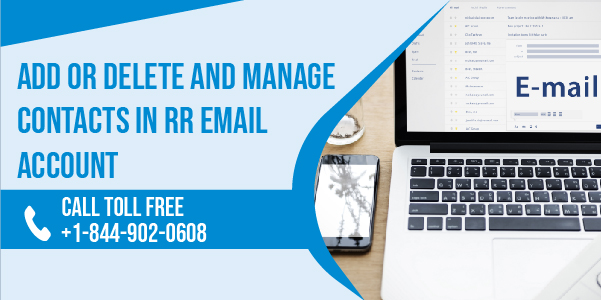Conquering Your RR Email Address Book: Adding, Deleting, and Managing Contacts in 2024
Conquering Your RR Email Address Book: Adding, Deleting, and Managing Contacts in 2024
Blog Article

Staying on top of your email contacts is crucial for efficient communication. Whether you're managing a business account or keeping in touch with loved ones, a well-organized address book saves time and ensures your messages reach the right people. But with interfaces changing and evolving, navigating contact management within your RR email account can sometimes feel like a mystery.
Fear not, fellow RR email users! This guide will equip you with the knowledge to confidently add, delete, and manage your contacts in 2024. Here, we'll delve into the steps involved, explore best practices, and answer any lingering questions you might have.
Adding New Contacts: Building Your Communication Network
Adding new contacts to your RR email address book is a simple process. Here's a breakdown of the typical steps:
Access Your RR Webmail: Log in to your RR email account through the webmail interface. This is usually done by visiting your service provider's website and navigating to the email login section.
Locate the Contacts Section: Once logged in, look for a section or tab labeled "Contacts," "Address Book," or something similar. This section will house your existing contacts and provide options for adding new ones.
Click "Create Contact" or "Add New": Within the contacts section, you'll typically find a button labeled "Create Contact," "Add New," or something similar. Clicking this button will open a form for entering the contact's details.
Fill Out the Contact Information: Here's where you provide the essential information about your new contact. This typically includes:
- Full Name: Enter the contact's first and last name.
- Email Address: This is the primary way you'll communicate with them via email.
- Phone Number (Optional): Add their phone number if you need it for future reference.
- Other Details (Optional): Some RR webmail interfaces might allow you to enter additional information like company name, department, or even a custom label for easy identification.
Save the Contact: Once you've filled out the necessary details, click the "Save" or "Create" button to add the contact to your address book.
Pro Tip: When adding a new contact from an email you've received, some RR webmail interfaces might offer a shortcut to add them directly from the email header. Look for options like "Add to Contacts" or a similar icon next to the sender's name.
Deleting Contacts: Streamlining Your Address Book
Keeping your address book organized is key to efficient communication. Here's how to remove outdated or unnecessary contacts:
Access Your Contacts Section: As mentioned earlier, locate the "Contacts" or "Address Book" section within your RR webmail interface.
Find the Contact You Want to Delete: You can typically search for the contact by name or scroll through your address book list.
Select the Contact and Click "Delete": Once you've found the contact you want to remove, click on their name to view their details. Look for a button labeled "Delete" or "Remove" within their contact information.
Confirm Deletion (Optional): Some RR webmail interfaces might prompt you to confirm the deletion. Click "Yes" or "Confirm" to permanently remove the contact from your address book.
Caution: Once a contact is deleted, it cannot be recovered unless you have a backup of your address book. Make sure you're absolutely certain before deleting a contact.
Managing Your Contacts: Keeping Things Organized
Now that you know how to add and delete contacts, here are some tips for effective contact management:
- Group Your Contacts: Most RR webmail interfaces allow you to create groups for your contacts. This is a great way to categorize them, such as "Family," "Work Colleagues," or "Social Groups."
- Use Descriptive Labels: Don't just rely on names – add labels to your contacts for additional context. For example, a colleague's label could include their department or role within the company.
- Keep Information Updated: Regularly review your contacts and update any outdated information like phone numbers or email addresses.
- Export Your Contacts (Optional): Some RR webmail interfaces might allow you to export your contacts as a .CSV file. This can be a handy backup option or useful for importing your contacts into another email service.
By following these steps and best practices, you can transform your RR email address book from a scattered list into a well-organized communication network. Remember, a well-managed address book saves you time and ensures your emails reach the intended recipients. So go forth, conquer your contacts, and keep those communication channels flowing smoothly!
Report this page